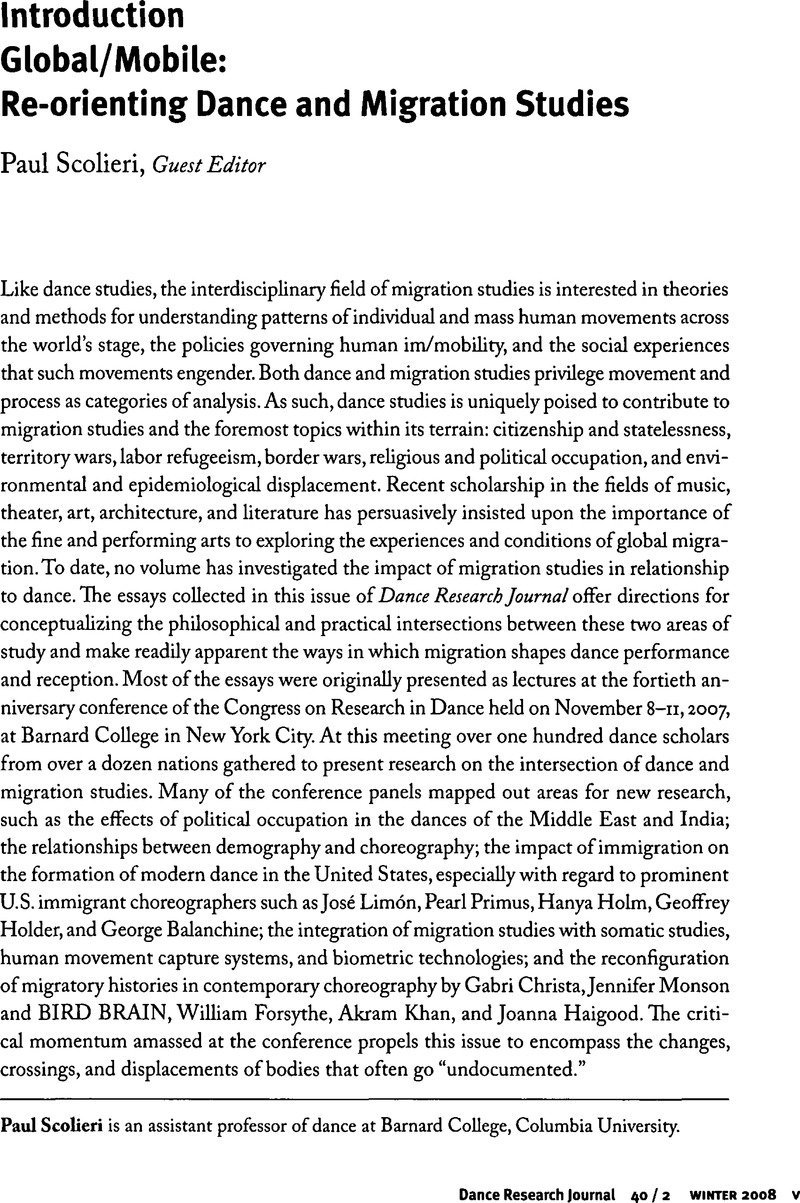Crossref Citations
This article has been cited by the following publications. This list is generated based on data provided by Crossref.
2013.
Salsa Crossings.
p.
155.
Martin, Rosemary
2013.
Alienation and transformation: an international education in contemporary dance.
Research in Dance Education,
Vol. 14,
Issue. 3,
p.
201.
2013.
Salsa Crossings.
p.
43.
2013.
Salsa Crossings.
p.
147.
2013.
Salsa Crossings.
p.
21.
2013.
Salsa Crossings.
p.
94.
2013.
Salsa Crossings.
p.
66.
2013.
Salsa Crossings.
p.
124.
2013.
Salsa Crossings.
p.
1.
2013.
Salsa Crossings.
p.
165.
Hammergren, Lena
2013.
Dance and Politics edited by Alexandra Kolb. 2011. Bern, Switzerland: Peter Lang AG, 348 pp., photographs, 1 table, notes, index. $87.95 paper..
Dance Research Journal,
Vol. 45,
Issue. 3,
p.
160.
Njaradi, Dunja
2014.
From Employment to Projects: Work and Life in Contemporary Dance World.
Text and Performance Quarterly,
Vol. 34,
Issue. 3,
p.
251.
Smith, Yda J.
2018.
Traditional Dance as a Vehicle for Identity Construction and Social Engagement after Forced Migration.
Societies,
Vol. 8,
Issue. 3,
p.
67.
Van Assche, Annelies
2020.
Labor and Aesthetics in European Contemporary Dance.
p.
37.
Oh, Chuyun
2020.
From Seoul to Copenhagen: Migrating K-Pop Cover Dance and Performing Diasporic Youth in Social Media.
Dance Research Journal,
Vol. 52,
Issue. 1,
p.
20.
Fiskvik, Anne
2020.
Renegotiating Identity Markers in Contemporary Halling Practices.
Dance Research Journal,
Vol. 52,
Issue. 1,
p.
45.
Van Assche, Annelies
2020.
Labor and Aesthetics in European Contemporary Dance.
p.
167.
Damsholt, Inger
and
Hoppu, Petri
2020.
Editors’ Note.
Dance Research Journal,
Vol. 52,
Issue. 1,
p.
1.
Perillo, J. Lorenzo
2020.
Choreographing in Color.
Oh, Chuyun
2021.
“Can you dance for me?” the (Im)possibility of speaking trauma in dance ethnography.
Text and Performance Quarterly,
Vol. 41,
Issue. 3-4,
p.
241.



